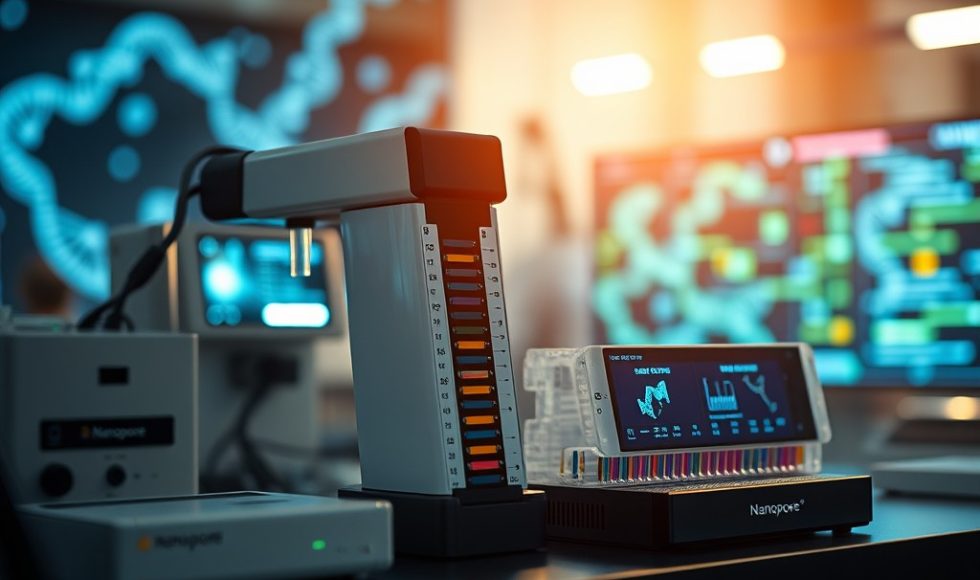Katherine Lawrence, from the Machine Learning and Bioinformatics team at Oxford Nanopore Technologies, spoke at the Nanopore Community Meeting on “Bacterial isolate and plasmid sequencing.” Lawrence began by emphasizing the importance of microbes and learning about their sequences. Long reads help assemble bacterial genomes efficiently. Bacterial genome modifications include 4mC, 5mC, and 6mA. Lawrence noted […]
David Yarmosh from ATCC presented at the Nanopore Community Meeting in Boston. The session’s title was intriguing: “How good is good enough?” Yarmosh is a bioinformatician with ATCC. They noted that the ATCC was founded in 1925 and now has nearly 5,000 genomes. Yarmosh explained that they are doing about 1,000 genome assemblies per year. […]
Vivien Horvath from Lund University in Sweden presented at the Nanopore Community Meeting in Boston. The title of the session was “Studying disease-causing polymorphic transposable element insertions using nanopore sequencing.” They work on X-linked Dystonia-Parkisonism (XDP), an adult-onset neurogenerative disorder. Interestingly, it affects mostly males from Panay, Philippines, and is characterized by neuronal cell loss […]
Latana Grub from Vanderbilt University spoke at the Nanopore Community Meeting in Boston. The session was titled “Long-read sequencing reveals the molecular landscape of mitochondrial DNA 6mA methylation.” Grub studies mitochondria. They noted that mitochondria are important organelles with their own genome and are critical for energy. Mitochondrial DNA has only one regulatory system. Grub […]
Alisa MacCalman from the University of Exeter in the UK presented at the Nanopore Community Meeting in Boston this year. The title of the session is “Understanding the binding of multiple transcription factors by base-pair-resolution chromatin accessibility.” The lab is interested in regulatory regions of the genome and how they help encode the diversity of […]
Jack Colicchio from Sound Agriculture in the US presented at the Nanopore Community Meeting in Boston on “DNA methylation patterns explain missing heritability in maize.” This ten-minute session was part of a breakout group. Colicchio spoke about the need for more resilient crops to address pollution, climate change, and population changes. They spoke about how, […]
Tonight, I watched a shorter Nanopore Community Meeting Boston session. Anastasia McKinlay from Indiana University & HHMI presented on “Positional mapping of active versus silenced rRNA gene clusters within A. thaliana nucleolus organizer regions. McKinlay spoke about nucleolus organizer regions in Arabidopsis thaliana. These positions are difficult to understand with shorter reads. Long-read sequencing helped […]
I continued watching the ONT “Empowering comprehensive sequencing at scale” session. The next speaker in this session was Brynja Sigurpalsdottir who spoke about large-scale methylation studies. They spoke about how base calling is used to detect methylation. The team sequenced 7,179 whole blood samples sequenced on 8906 PromethION R9.4 flowcells! Twenty-two samples were sequenced on […]
Heather Carleton from the Centers for Disease Control & Prevention (CDC) presented at London Calling 2024. The session was titled “Whole-genome sequencing in PulseNet foodborne molecular surveillance systems.” They began discussing the impact of foodborne illness in the United States and globally. Carleton noted that in some cases, hospitalization and death occur. This impact affects […]
Dominic Halliwell from the University of Bath in the UK presented at London Calling 2024 on “Direct sequencing of cytosine modification states from nanopore long-read data.” They are a doctoral student and were partially funded by Oxford Nanopore Technologies (ONT). Halliwell spoke about 5mC, 5hmC, and later oxidation derivatives, emphasizing that genome methylation can be […]











